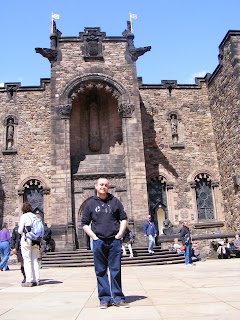Eating Out (6/10) – As you would expect from a main city, a large choice of options from your normal chains, to independent pubs and restaurants, the Witchery is meant to be a highlight for dinning
Nightlife (4/10) – We were around on week days and so the nightlife was rather quiet, most places closing around 11 pm, some night club options for the weekend, but not a place for 24 hour party person
Outdoors (8/10) – lots to see walking about the city, with many nice parks, and of course for those more adventurous there is always Authors seat to walk up
Romance (3/10) – some nice setting, with nice sunset on the coast line and over the castle, but the city itself did not inspire romance
Shopping (5/10) – very standard shopping for a capital, a main high street with the normal shops, and plenty of tourist shops along the royal mile. Two malls seemed to be rather small in comparison to other shopping places we have been too
Sight- seeing (5/10) – plenty to see outdoor, with some very nice parks, and so nice buildings, the Place would have been good to go in, as for the castle, well it’s worth it for the views but the contents itself were a little on the modest side
Hotel (5/10) – the hotels in Edinburgh seem to be very overpriced generally due to the fact it is a capital, however we managed to get a cheap and cheerful apartment for £60 per night a few minutes away from central prince street.
Communication/attitude (5/10) – seemed to vary from the very friendly and chatty, to those a bit gruff and standoffish
Transport (9/10) – very good easy to get bus from the airport to the city, multiple bus tour rides available; City not to big so you could manage to get to most places on foot thou
Value for money (5/10) – good value for the bus tours and for the apartment we stayed in, but the tourist traps were overpriced due to the fact that it’s a capital city.
Overall 55/100 = 55 %
Sunset over Scotland:











































